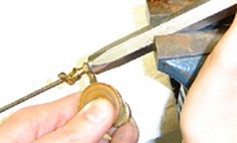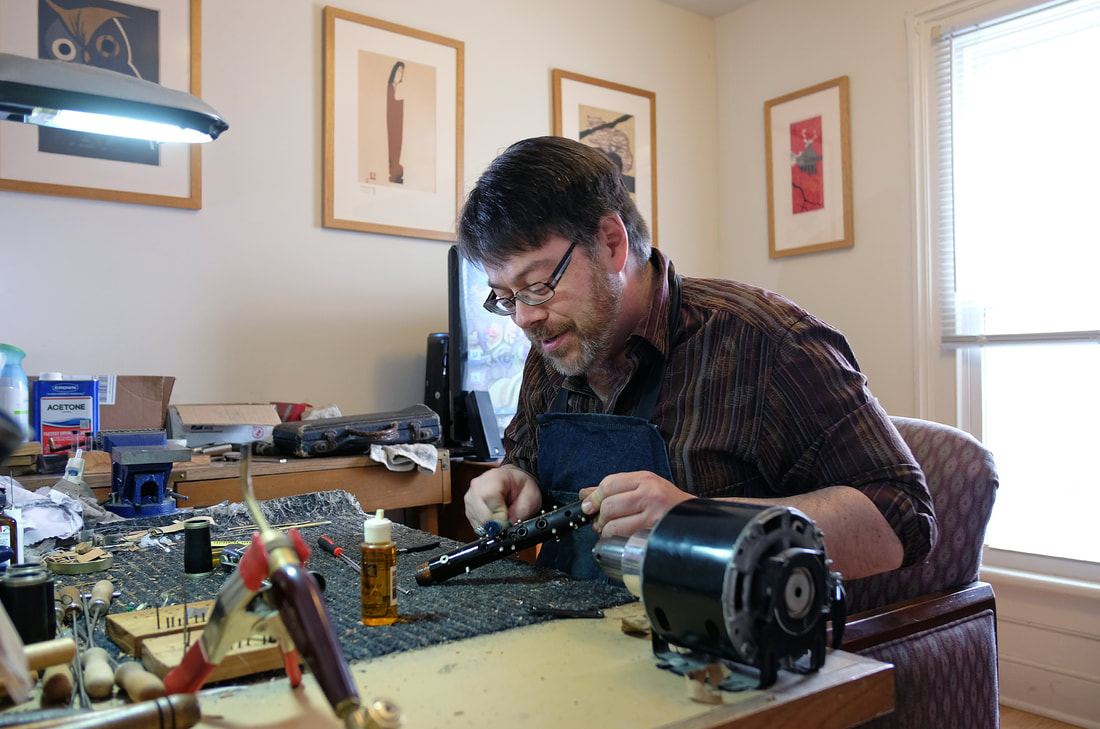 Many techs who routinely repair only band grade instruments have neither the time, the knowledge, nor the specialized tools to complete all these tasks, and little incentive to acquire them: At the $60 an hour that the average shop currently charges (plus supplies), a $600 bill wouldn't be out of the question and few customers are discerning or serious enough to make this kind of commitment to their instrument. Trying to explain why all this is necessary frequently got me looks suggesting that I was peddling Snake Oil: We are, after all, a nation of bargain hunters, and quality work is no bargain! However, once your older instrument has been thoroughly overhauled in this manner, you can be assured that, not only is it playing its best, but that it will require little maintenance other than oiling, adjustment and occasional pad replacement for years to come! Below I include some technical definitions for the curious and foolhardy... Swedging/Countersinking As clarinets age, the keys get loose from wear and dirt: metal is actually ground away at each end where it rubs against its post! Once the problem becomes severe enough, pads will no longer align properly with toneholes (causing leaks) and the whole instrument will have a loose ‘clackety’ feel. Swedging, which is the technique used on keys with a through rod, is the process of compressing the metal at the end of the key to extend it and bring it back tight against the post. For solid keys that pivot on a screw, we countersink: slightly deepening the hole in the post until the point of the screw once again makes firm contact with the key and keeps it from shifting. Properly done, it can restore an “almost new” feel to the mechanism, help eliminate leaks, and quiet the instrument... To be continued
0 Comments
Your comment will be posted after it is approved.
Leave a Reply. |
Archives
February 2024
AuthorThe Licorice Shtick Blog is the creation of the Vintage Clarinet Doctor, a Winston Salem, NC based woodwind instrument repair shop specializing in vintage and antique clarinets, saxophones, and the occasional flute. Categories |

 RSS Feed
RSS Feed